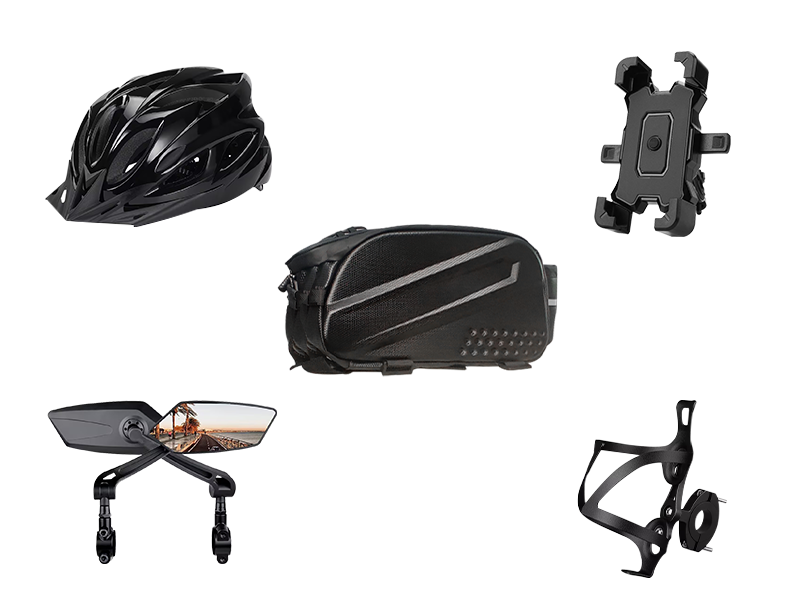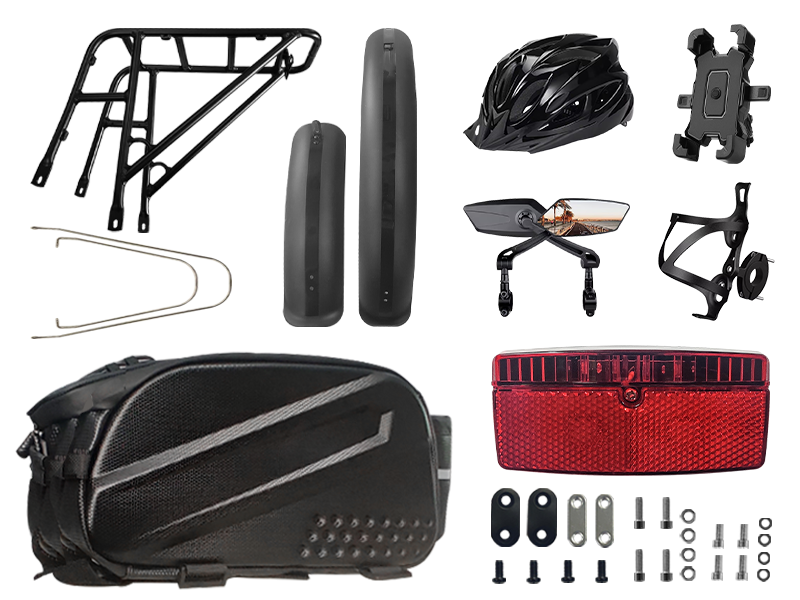E-Bike Policies and Regulations in the US and Canada: Navigating the Legal Landscape
AUG 04, 2024
Electric bikes (e-bikes) are revolutionizing urban transport across North America, offering an eco-friendly, efficient alternative to traditional vehicles. As their popularity grows, understanding the regulatory frameworks in the US and Canada is crucial for riders, manufacturers, and policymakers. This blog delves into the current e-bike policies and regulations in both countries, highlighting key differences and future trends.
1. E-Bike Classification: A Foundation for Regulation
United States: In the US, e-bikes are categorized into three classes, which impact their regulation:
- Class 1: Pedal-assist only; the motor engages when pedaling and stops at 20 mph.
- Class 2: Throttle-assisted; the motor can engage without pedaling and stops at 20 mph.
- Class 3: Pedal-assist only; the motor engages when pedaling and stops at 28 mph. Some areas restrict Class 3 e-bikes to roads and bike lanes, excluding multi-use paths.
Canada: Canada similarly classifies e-bikes into three types:
- Type 1: Pedal-assist with a maximum speed of 32 km/h (20 mph).
- Type 2: Throttle-assisted with a maximum speed of 32 km/h.
- Type 3: Pedal-assist with a maximum speed of 32 km/h.
These classifications help standardize regulations but are subject to regional variations.
2. E-Bike Regulations in the United States
Federal Guidelines:
- The US lacks a single, comprehensive federal e-bike policy. The Consumer Product Safety Commission (CPSC) provides basic safety guidelines but leaves significant regulation to state and local authorities.
- The e-bike classification system, adopted by several states, facilitates some consistency across the country, though local regulations can vary widely.
State and Local Regulations:
- California: One of the most progressive states in e-bike regulation, California allows Class 1 and Class 2 e-bikes on bike paths and Class 3 e-bikes on streets and highways. Specific rules may apply to helmet use and age restrictions.
- New York: New York City permits Class 1 and Class 2 e-bikes on bike lanes and streets but restricts Class 3 e-bikes to certain areas.
- Other States: Regulations vary, with some states having minimal restrictions and others imposing specific rules regarding where e-bikes can be used and how they should be equipped.
Infrastructure Development:
- Many states are investing in infrastructure to support e-bikes, such as dedicated bike lanes and charging stations. Federal funding is also available for enhancing e-bike infrastructure as part of broader transportation initiatives.
3. E-Bike Regulations in Canada
Federal Guidelines:
- The Canadian government classifies e-bikes into three types and establishes basic safety standards. These regulations aim to harmonize e-bike use across provinces while ensuring safety and performance standards.
Provincial and Municipal Regulations:
- British Columbia: Requires helmets for all e-bike riders and has specific regulations for e-bike usage on roads and paths. The province distinguishes between different types of e-bikes and their allowed uses.
- Ontario: Has detailed regulations that cover e-bike use, including helmet requirements and distinctions between e-bikes and electric scooters.
- Other Provinces: Regulations are generally consistent but may vary in specifics regarding e-bike access to different types of infrastructure and safety requirements.
Infrastructure Development:
- Canadian cities are increasingly investing in e-bike-friendly infrastructure, including dedicated bike lanes and charging stations. Provincial and municipal governments support e-bike adoption through various programs and incentives.
4. Emerging Trends and Future Directions
Integration with Public Transport:
- Both the US and Canada are exploring ways to integrate e-bikes with public transportation systems, offering combined solutions that enhance urban mobility.
Technological Innovations:
- Advances in battery technology, smart features, and connectivity are expected to improve e-bike performance and user experience. Innovations such as GPS tracking and automated assistance are becoming more prevalent.
Environmental and Health Benefits:
- As cities aim to reduce carbon emissions and promote healthier lifestyles, e-bikes are increasingly seen as a key component in achieving these goals. Expect to see more investments in e-bike infrastructure and supportive policies.
Standardization Efforts:
- Ongoing efforts to harmonize e-bike regulations across states and provinces may simplify the landscape for riders and manufacturers. This could involve standardizing classifications, safety requirements, and operational rules.
E-bikes are at the forefront of a transportation revolution, offering numerous benefits while presenting new challenges. As policies and regulations continue to evolve in the US and Canada, staying informed about these changes will be essential for riders, manufacturers, and policymakers. With growing support and infrastructure development, the future of e-bikes looks promising, paving the way for a more sustainable and efficient transportation landscape.
Stay tuned for more updates on e-bike regulations and trends!













